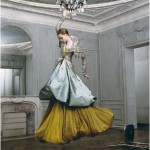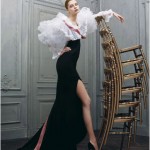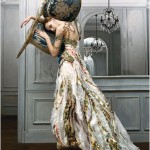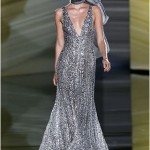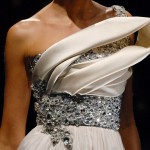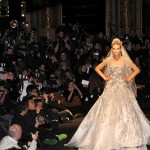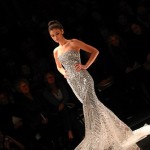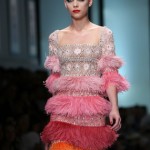Haute couture (French for “high sewing” or “high dressmaking”;) refers to the creation of exclusive custom-fitted fashions. It originally referred to Englishman Charles Frederick Worth’s work, produced in Paris in the mid-nineteenth century. In modern France, haute couture is a “protected name” that can be used only by firms that meet certain well-defined standards. However, the term is also used loosely to describe all high-fashion custom-fitted clothing, whether it is produced in Paris or in other fashion capitals such as Milan, Tokyo, New York, Rome and London. Haute couture is made to order for a specific customer, and it is usually made from high-quality, expensive fabric and sewn with extreme attention to detail and finish, often using time-consuming, hand-executed techniques.
The term can refer to: the fashion houses or fashion designers that create exclusive and often trend-setting fashions the fashions created . To earn the right to call itself a couture house and to use the term haute couture in its advertising and any other way, members of the Chambre syndicale de la haute couture must follow these rules:
Design made-to-order for private clients, with one or more fittings.
Have a workshop (atelier) in Paris that employs at least fifteen people full-time.
Each season, present a collection to the Paris press, comprising at least thirty-five runs with outfits for both daytime wear and evening wear. However, the term haute couture has been misused by successive ready-to-wear brands and high street labels since the late 1980s so that its true meaning has become blurred with that of prêt-à -porter (the French term for ready-to-wear fashion) in the public perception. Every haute couture house also markets prêt-à -porter collections, which typically deliver a higher return on investment than their custom clothing. In fact, much of the haute couture displayed at fashion shows today is rarely sold; it is created to enhance the prestige of the house. Falling revenues have forced a few couture houses to abandon their less profitable couture division and concentrate solely on the less prestigious prêt-à -porter. These houses, such as Italian designer Antonio Capucci, all of whom have their workshops in Italy, are no longer considered haute couture.
Once you see real couture you will be able to notice the incredible difference bewteen it and standard fashion. It is pure magic!
Many top designer fashion houses also use the word for some of their collections.
Adeline André
Chanel
Christian Dior
Christian Lacroix
Dominique Sirop
Emanuel Ungaro
Franck Sorbier
Givenchy
Jean Paul Gaultier
Jean-Louis Scherrer
As of early 2007, there are three correspondent (foreign) member houses:
Elie Saab
Giorgio Armani
Valentino
Â
6 Part series “The Secret World of Haute Couture”, very interesting clip series from the BBC, they take a rare look behind the secret inner circle of Haute Couture. I had no idea how huge and secreative of a society this was. Check it out!




